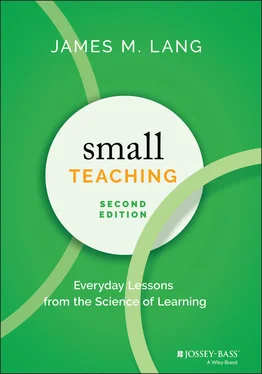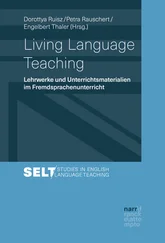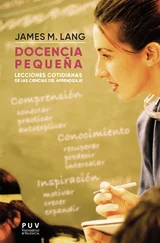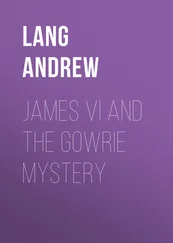After the class, the researchers looked at two different measures to see whether the pause–predict–ponder exercises had improved student mastery of intercultural competence: student scores on tests of cultural knowledge, and their more general cultural thinking or reasoning skills through their discussion board posts. The students who had the opportunity to make predictions outscored their peers on the first exam by about that same 10% margin that we saw in the earlier experiments, with some diminishing returns on the subsequent assignments—which might tell us that prediction, like many of the active learning interventions we will consider in this book, especially helps new learners. Ratings of the posts in the discussion board also showed the students in the experimental condition performing significantly higher on assessments of intercultural competence than those in the control condition. In the discussion of their results, the researchers note that students made correct predictions only about 40% of the time, another point in favor of the notion (to be qualified shortly) that wrong predictions do no harm. They also point to an interesting side benefit they witnessed: students in the experimental condition posted more frequently on the discussion boards, and more frequently on target, than those in the control condition: “The experimental group showed a better ability to maintain a productive discussion compared to the control group (p. 283).” It seems that in this case the prediction activity also helped engage the students more thoroughly in the material.
Researchers who study the brain can help clarify the mechanics that underpin the results of all of these experiments. Neuroscientists are increasingly demonstrating that our brains are prediction-making machines, and that our learning stems most fundamentally from the cycle of making predictions and then adjusting our thinking in light of the accuracy of those predictions. Stanislas Dehaene is a professor of experimental cognitive psychology at the College de France, and the Director of the Neurospin Brain Imaging Center. In his book How We Learn: Why Brains Learn Better Than Any Machine … for Now , he offers a detailed but accessible tour of learning and the brain, and concludes that “Generating a prediction, detecting one's error, and correcting oneself are the very foundation of effective learning” (Dehaene 2020, p. 209). Our brains continuously create models of the world around us, use those models to predict how our experiences will unfold, and engage in corrective re-modeling in light of what actually happens. That corrective re-modeling is what we call learning. A new driver's brain makes continuous predictions about how the car will behave as she drives—she expects the car to slow down and come to a stop when she brakes. The first time she drives in the snow, applies the brake, and finds herself skidding, her brain notes the failure of her existing mental model—applying the brakes doesn't always stop the car with the same efficacy. She has to take weather conditions into account. Her mental model of driving expands, her predictive abilities as a driver improve. She has learned.
In a classroom setting, predictive activities reveal to students the gaps and problems in their existing knowledge of the course subject matter and provoke them to fill and repair their understanding. When I am asked to make a prediction or try a new skill, I am forced to surface whatever knowledge and skills I currently possess and use them in service of the task in front of me. In some cases, I will see immediately that I don't have what I need— I have no idea how to do this , I might think to myself. In a classroom setting, that recognition should push me toward learning: If I want to succeed in here, I need more information . But I might equally well think I do have enough information or skill to get the job done, in which case I will make a confident prediction, assuming that I already know everything I need to know. When I discover that my prediction was incorrect, I am put back on my heels again. What went wrong? What information was I missing? What would I have needed to know in order to get it right? Since very few students, if any, will come into our classes knowing everything they need to know already, the predictive activities we design are likely to reveal at least some errors in their thinking, showing them the gaps in their knowledge and skills. Ideally, your course material then gives them precisely what they need in order to fill those gaps.
Predictive activities can also give students a clearer understanding of what and how they need to study and learn in any particular course. As Elizabeth Bjork points out in relation to the practice tests in her experiments, “Taking a practice test and getting answers wrong seems to improve subsequent study, because the test adjusts our thinking in some way to the kind of material we need to know” (quoted in Carey 2014b). Well-planned pretests or predictive activities alert the students to essential course content and the testing style of the instructor. Envision a student sitting in a chemistry course in the fall semester of her first year of college. She had a year of chemistry in high school, and her high school teacher focused entirely on having students memorize facts and formulae, knowledge of which he assessed exclusively through multiple-choice tests. She has been conditioned by that teacher to think about and learn chemistry through rote learning, a memorization technique she will carry into her new course—unless, of course, her college professor opens the semester by asking the class to try to answer some conceptual questions, and mentions that these problems are similar to ones that will appear on the final exam. When that first-year student finds herself scratching her head and unable to come up with the answers, she will immediately see that she has to approach this course, and her learning, in a new way. She has to focus on conceptual understanding instead of the memorization of facts. If she hadn't encountered that first-day predictive activity, she might have spent the first five weeks of the semester, before the first major exam, focused entirely on repeating her high school study practices.
Ultimately and perhaps most simply, predictive activities mimic something we normally ask of learners who are attempting to master a skill: requiring them to try before they are ready . We can all likely draw from our experiences with attempts to master skills of one sort or another, and we know full well that however much one might read in advance about throwing a football or painting a portrait or giving a speech, the real learning happens after we have thrown ourselves into the situation and made that first (unsuccessful) attempt. When I took a class to become licensed in scuba diving, we spent the first half of every session in a classroom taking notes on some skill we would have to practice in the pool. I typically jumped in the pool for the second half of class thinking I had that skill mastered, but within a few minutes the gaps in my knowledge were revealed, and I floundered around for a while, doing it completely wrong until the instructor swam over and gave me the help I needed, at which point the real learning began.
We facilitate this type of learning in many academic contexts, asking students to try out cognitive skills before they are ready. I don't spend the entire semester lecturing to my freshman composition students about all of the writing techniques they will need to write a perfect academic essay and then give them one final assignment to show me how they have mastered those skills. I assign essays from the beginning of the semester, even though some of what they need to write great academic essays won't be covered for another 4 or 8 or 12 weeks. Asking students to make predictions before learning new material just represents another version of this common teaching approach.
Читать дальше












